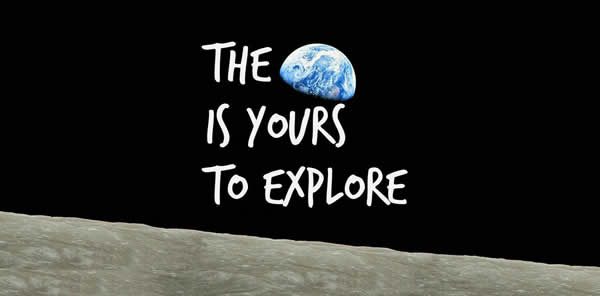HiRISE images
Bearded craters and dunes

A piece of Mars: This 600x450 m (1969x1476 ft) scene has a complex sedimentary history. How are bearded craters and dunes formed? They weren't always bearded. At some point, a deposit of bright material accumulated on this surface, and was then eroded so that all that remains of it is what is protected by topography (anything that pokes up like dunes or crater rims). Can you find the boulder that has tumbled downslope (it too has a beard!). (HiRISE ESP_038826_1700, NASA/JPL/Univ. of Arizona) read more ❯
The long, low dune

A piece of Mars: A long, low dune covered in long, linear ripples stretches across the scene (600x450 m; 1969x1476 ft). Dark gray areas on the dune show where sand has most recently moved. A small slip face has formed on the southeast side of the dune, but ripples have formed on it, so there haven't been any recent avalanches here. (ESP_038615_1665, NASA/JPL/Univ. of Arizona) read more ❯
Wind, wind, impact(!), and then more wind...

A piece of Mars: Some time ago, something hit the ground on Mars and made this impact crater, right into a field of ripples. Stuff thrown up during the impact fell back down, burying the ripples with the gray ejecta rays that radiate from the crater. But the wind kept blowing, and in some places you can see where new ripples have formed on top of the ejecta. That's Mars for you: wind, wind, wind, impact(!), more wind... (HiRISE ESP_038918_1650, NASA/JPL/Univ. of Arizona) read more ❯
Aeolian shoreline

A piece of Mars: On the left is a steep slope leading to a hill. On the right are waves - but not waves of water or any other kind of liquid. These are dunes or very large ripples, blown by the wind into intricate patterns. Sharp eyes might spy boulders that have rolled downslope into this "sea" - there's even a dotted track that one boulder made as it went. Can you find the boulder? (HiRISE ESP_038799_1590, NASA/JPL/Univ. of Arizona) read more ❯
Inverted crater

A piece of Mars: This circular hill is 200 m (~656 ft) across and ~48 m (~160 ft) high. It stands alone on a relatively flat plain. Why is it there? The surface here used to be ~48 m higher than it is now - on that old surface, a crater formed. The crater was filled in by sediment. And then the surrounding terrain was eroded away by the wind (that's a whole lot of stuff to be removed over time!). What's left is the old crater fill, but one day it too will be blown away. (HiRISE ESP_038309_1870, NASA/JPL/Univ.... read more ❯
Panda stripe dustslides

A piece of Mars: This 600x450 m (1969x1476 ft) scene of a hillside shows new, dark dustslides that slid downhill (to the lower left). Faint stripes of older dustslides are visible, covered by bright dust and small ripples. Thousands of these form every year on Mars, stretching several kilometers downslope - there is nothing quite like this here on Earth! (HiRISE ESP_038387_1855, NASA/JPL/Univ. of Arizona) read more ❯
Textured gullies

A piece of Mars. These are gullies on a martian hillside (upslope is to the upper right). Water may be what forms the channels, carrying soil and rocks downslope. The textured pattern of the lower slope is caused by the wind forming ripples on loose sediment that has been transported partway down the hill. (HiRISE ESP_038389_1105, NASA/JPL/Univ. of Arizona) read more ❯
Rivers of freezing gas

A piece of Mars: This 600x450 m (1969x1476 ft) polar scene shows sinuous channels 2-8 m (7-26 ft) wide carved out of ice-filled and ice-covered terrain. They're not formed by flowing water, but instead by flowing gas that gets trapped under thick winter ice. The pressure of the underground gas builds until it explodes, forcing its way out, and carrying brown soil with it. Local winds blow the soil downwind (to the upper right), forming distinctive streaks. This happens every year on Mars. Awesome. (HiRISE ESP_038399_0945, NASA/JPL/Univ. of Arizona) read more ❯
Huge wind-made cliffs

A piece of Mars: Topography in color is draped over an image of a windblown cliff. The entire shape of the landscape here was formed by wind, from the large 400 m (1312 ft) tall zigzag cliff, to the small streamlined shapes in the valley. Even the deep gorge that looks like a stream channel was formed by winds, all blowing toward the upper left. (HiRISE PSP_006694_1895 NASA/JPL/Univ. of Arizona, HRSC ESA/DLR/FU Berlin) read more ❯
Mars is watching you...

A piece of Mars: This looks like a pair of eyes looking at us. It's really some small brown hills, two of which (the "eyes") are surrounded by dark gray sand that has blown into scours as the wind interacts with the topography of the hills. It's a great way to tell what direction the strongest winds blow here: from the bottom to the top of the frame (the frame is 509x382 m or 1670x1253 ft). (HiRISE ESP_037995_1755, NASA/JPL/Univ. of Arizona) read more ❯